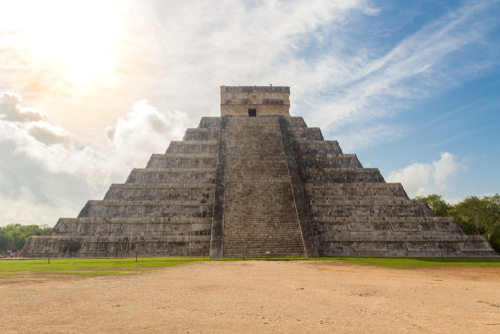 When you think of fascinating archaeological sites, you probably think of places like Tikal in South America, the Parthenon in Greece, or Petra in Jordan. You probably don’t automatically think of North America. But the Americas are home to a surprising number of archaeological sites representing centuries of early peoples and cultures. Below are 30 of the most fascinating archaeological sites in North America.
When you think of fascinating archaeological sites, you probably think of places like Tikal in South America, the Parthenon in Greece, or Petra in Jordan. You probably don’t automatically think of North America. But the Americas are home to a surprising number of archaeological sites representing centuries of early peoples and cultures. Below are 30 of the most fascinating archaeological sites in North America.
Bighorn Medicine Wheel
Lovell, Wyoming
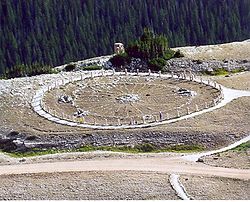
There are a number of circular monuments known as “medicine wheels” located throughout North America, but none are as large, or as famous, as the Bighorn Medicine Wheel in Lovell, Wyoming. Measuring 75 feet in diameter, this massive structure has been stumping archaeologists for decades. It’s known that several different Great Plains tribes saw these wheel shaped constructions as sacred. But because this particular Medicine Wheel pre-dates Wyoming’s powerful Crow population, it’s uncertain which group is responsible for this one.
Blackwater Draw
Clovis, New Mexico
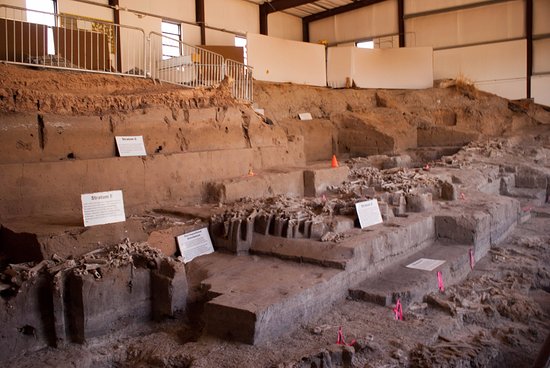
Despite being located in the American southwest, the archaeological site Blackwater Draw was actually left by the paleoindians known as the Clovis Culture. This is the group of people who crossed the Bering land bridge to move into what is now North America. Though the Clovis Culture actually left a number of sites throughout their travels, Blackwater Daw is largely considered to be the type-site, or model, for historians researching the culture. The site is thought to be approximately 11,000 years old. It includes various excavation sites and a museum housing the many artifacts found here.
The Blythe Intaglios
Blythe, California
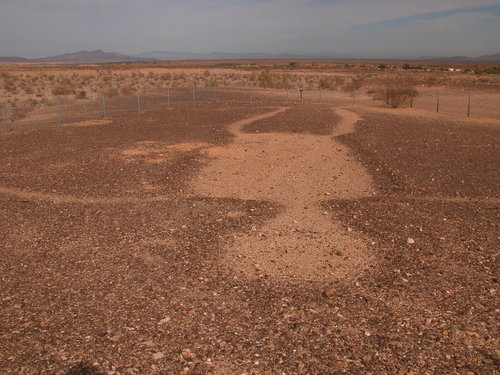
Located near the desert town of Blythe, California are a set of American Nazca Lines, or huge geoglyphs carved into the desert floor. What makes this particular archaeological site so fascinating is the sheer size of each image. The dozens of humans and animals scraped into the desert layers are up to 171 feet long, meaning they’re only visible in full from the air. The site wasn’t discovered until a local pilot flew over them in 1931. Since then, very few facts have been established. While archaeologists have concluded the glyphs were likely created about 3,000 years ago, questions as to who created them and why remain a mystery.
Cahokia
Collinsville, Illinois
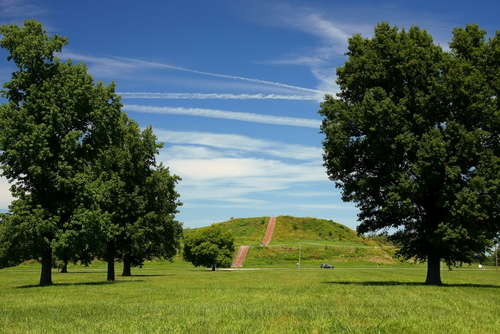
Situated next to the Mississippi River in a small-town Illinois is the prehistoric site of Cahokia. After extensive excavation, archaeologists believe that from about 600 to 1400, Cahokia was a major city belonging to the Mississippian people. In fact, it’s been suggested that Cahokia was larger even than London at the same point in time. Most of what remains in Cahokia are several earthen mounds, including the Monks Mound, thought to be the largest prehistoric mound north of Mexico. Visitors to Cahokia can also see the remains of Woodhenge, believed to have once been used by the Mississippian people as an astronomical calendar to keep track of the seasons.
Calakmul
Campeche, Mexico
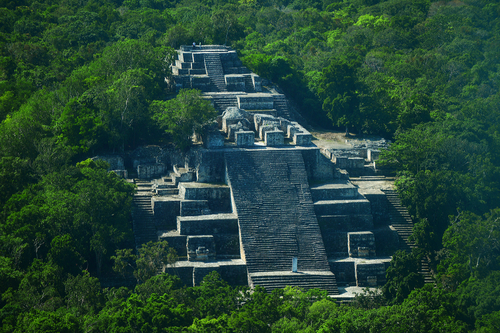
Chichen Itza may get all of the attention, but it is actually thought that Calakmul was the largest city during the days of the Maya empire. “Discovered” in 1931 by an American botanist, Calakmul has undergone extensive excavation in the decades since. Most notably, Calakmul is home to an incredibly well preserved pyramid, the largest in the Yucatan. It is thought to have once been capable of holding more than 50,000 people at one time.
Canyon de Chelly
Canyon de Chelly National Monument, Chinle, Arizona
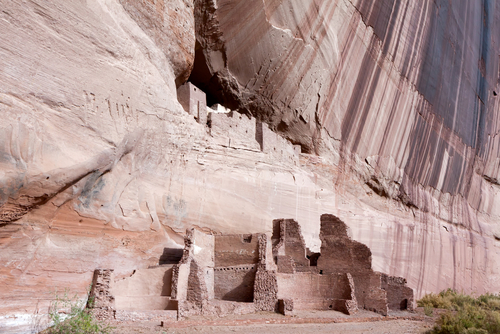
Protected within a Navajo Reservation in Arizona is Canyon de Chelly, one of the longest continually inhabited places in North America. The site contains a whopping 2,500 archaeological spots left by the Navajo and Anasazi tribes. It includes dozens of Anasazi village sites, as well as the remains of dwellings known as Sliding House, Antelope House, and White House. Visitors can tour the White House with a knowledgeable Navajo guide.
Casa Grande Ruins
Coolidge, Arizona
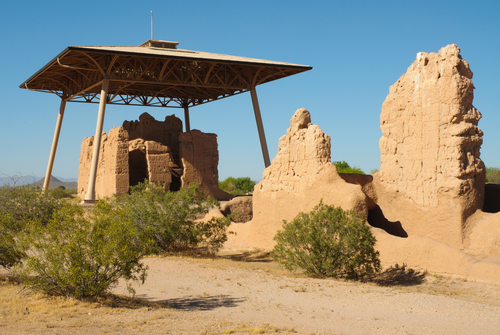
The Casa Grande Ruins in Coolidge, Arizona likely dates back to the 1200s. It’s constructed out of adobe. There were once several other buildings, plus a ball court, surrounded by a wall. And that’s it. Fortunately, the ruins are protected by a national park, with whom archaeologists are working to figure out the answers to the many unanswered questions. What was the main four-story structure used for? Who constructed the site? And was it the same group of people who completely abandoned it by 1440?
Chaco Canyon
Chaco Canyon, New Mexico
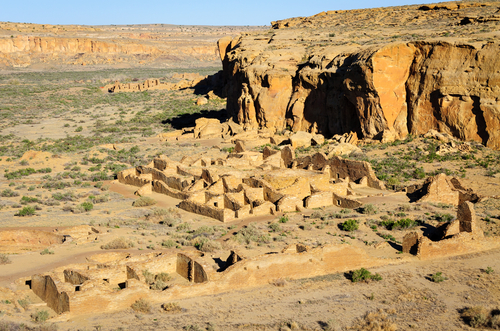
Like Mesa Verde, another archaeological spot to make our list of North America’s most fascinating archaeological sites, Chaco Canyon was once inhabited by ancient Pueblo people from about 900 to 1150. Backcountry trails lead visitors all around some of the site’s most interesting features, prehistoric roads and stairways, and myriad examples of rock art. The site’s most interesting finds, however, are the buildings and complexes stretching nine miles across the canyon floor. Archaeologists have found that these once-impressive structures were carefully built to align with cardinal points. It’s also clear that the buildings were extremely large. Some contained a second story and/or underground chambers.
Chichen Itza
Yucatan, Mexico
Chichen Itza is likely the most famous archaeological site in all of North America, and for good reason. Constructed by the Mayans around the year 600, this pyramid is in remarkable condition. It has recently been declared one of the “new seven wonders of the world.” Archaeologists continue to work in and around Chichen Itza. Much of what has been discovered is that the pyramid was a temple used to conduct business relating to the Maya Astronomical Calendar.
Head-Smashed-In Buffalo Jump
Fort MacLeod, Alberta, Canada
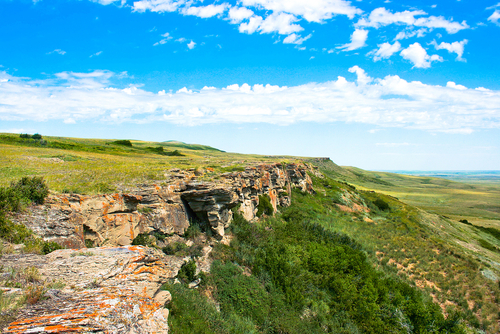
With a name like Head-Smashed-In Buffalo Jump, you can probably already guess that this place has an interesting story. The UNESCO World Heritage-listed site is one of the most important aboriginal archaeological sites in Canada. Findings from the site span more than 6,000 years of human activity. Most notably, hunters would drive bison over the edge of the nearby cliff to their death — hence the site’s name. Archaeologists have been excavating bison bones and butchering materials here since the 1960s.
Horseshoe Canyon Pictographs
Canyonlands National Park, Utah
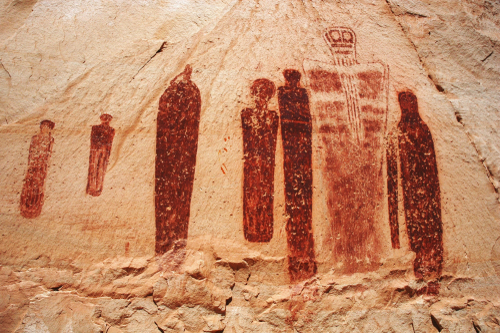
Protected within Utah’s Canyonlands National Park are the Horseshoe Canyon Pictographs. Thought to be the best preserved examples of ancient Native American rock art, the pictographs are somewhere between 700 and 2,000 years old. This impressive collection of rock art is separated into multiple panels throughout the canyon, with the longest section measuring in at 200 feet long and 15 feet high. The painted figures include both people and animals, and many are life-sized. To see the pictographs, visitors must drive 30+ miles into the national park, then hike along the 7-mile-long trail.
Judaculla Rock
Sylva, North Carolina
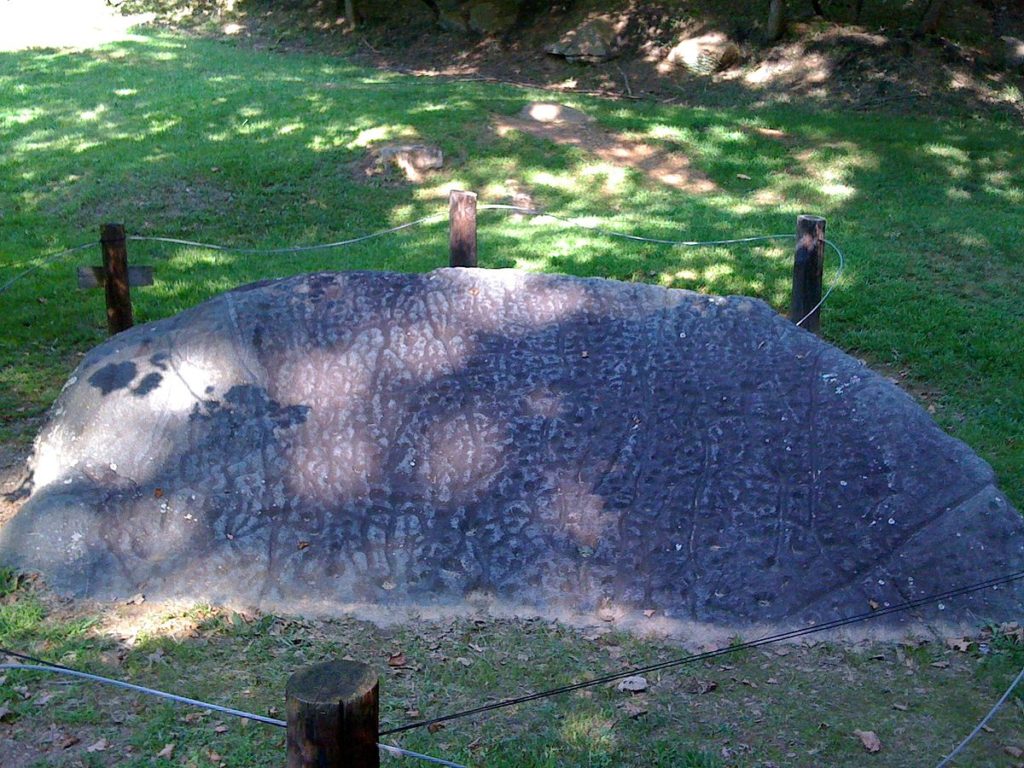
While most of the fascinating archaeological sites on our list consist of multiple buildings strewn over many acres, the Judaculla Rock is simply that: a rock. Still, this rock located in Sylva, North Carolina has a ton for archaeologists to wonder about. The soapstone boulder has dozens of ancient petroglyphs carved into its fragile surface. While some of the glyphs are easily decipherable, others are a mystery. The local Cherokee population still view Judaculla Rock as a sacred object. Fortunately, they are working with archaeologists and historians intent on preserving the rock while finding out more about it.
Kinishba Ruins
Whiteriver, Arizona
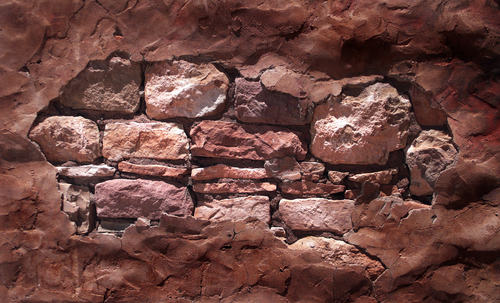
Likely constructed between 1250 and 1350, the Kinishba Ruins were once a massive dwelling for the Mogollon people. Unfortunately, not much of the former great house remains, and weather has damaged the little that’s left. Still, it’s fascinating to imagine what Kinishba once looked like. Archaeologists have found the ruins of a courtyard and site for religious ceremonies, plus evidence suggesting that the house once held 1,500 people in its 600 rooms.
L’Anse Aux Meadows
Newfoundland, Canada
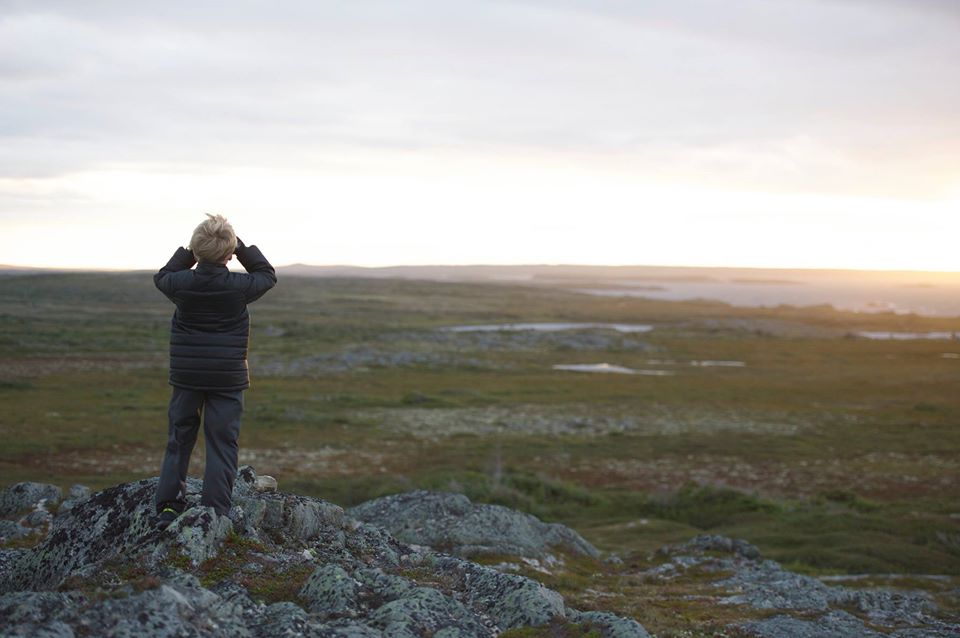
Christopher Columbus may get all the credit for having been the first European to discover America. But historians have proven that Icelandic Vikings landed on the island of Newfoundland as early as the year 1000. The fascinating archaeological site of L’Anse Aux Meadows is the source of that proof. Archaeologists have found the remains of dwellings and enough artifacts to suggest this particular group of Vikings actually formed a small community on the island. Visitors to L’Anse Aux Meadows can take a guided tour to see and learn all about the houses and workshops of which there are still a trace. There is even a forge where it is believed iron was smelted in North America for the very first time.
Meadowcroft Rockshelter
Avella, Pennsylvania
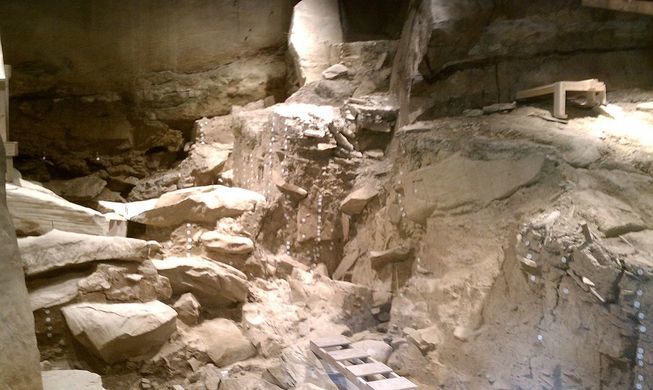
It was widely believed that the Clovis Culture — the people who crossed the Bering land bridge approximately 13,000 years ago — were the first humans in the Americas. That is, until Meadowcroft Rockshelter was discovered and it was concluded that there were people in modern-day Pennsylvania as far back as 16,000 years ago! Despite its age, this fascinating archaeological site has a ton for visitors to view. Tours led by knowledgeable historians include the huge rock overhang under which these early people lived, plus several interpretive villages recreating life in Meadowcroft over the centuries.
Mesa Verde
Mesa Verde National Park, Mesa Verde, Colorado
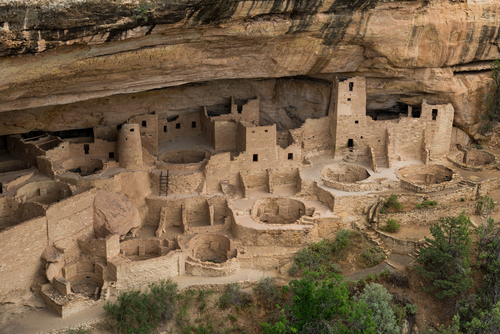
Though technically located in the state of Colorado, Mesa Verde National Park is better known as the Four Corners — that is, where the states of Colorado, Utah, Arizona, and New Mexico all meet. While most national parks are limited to hiking trails and some camp grounds, Mesa Verde boasts 4,000 known archaeological sites dating from about 600 to about 1300. These include the Sun Temple, plus Cliff Palace, Balcony House, and Spruce Tree House. All of these include some 600 cliff-carved dwellings once inhabited by the ancient Pueblo people. Petroglyphs have also been found throughout the park, many of which can be seen by following the Petroglyph Point Trail.
Monte Alban
Valles Centrales, Oaxaca, Mexico
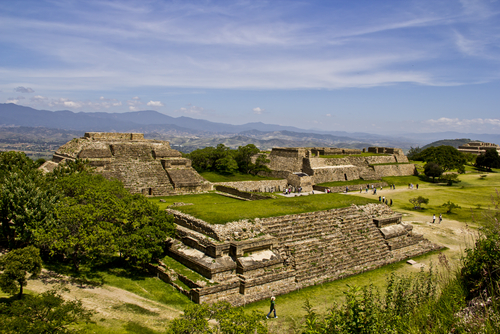
For more than 1,000 years, this stunning hilltop city acted as the main urban, political, and commercial center of the Zapotec people. Over the course of decades’ worth of excavations, archaeologists have discovered much about the Zapotec and Monte Alban. The well-preserved site consists of a massive Gran Plaza, several excavated tombs, a primitive astronomical observatory, a ball court, and a series of mysterious stone carvings depicting figures thought to be warriors killed in battle.
Montezuma Castle
Camp Verde, Arizona
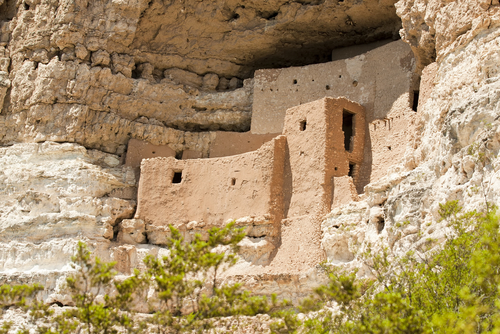
This fascinating archaeological site may be named after Montezuma, king of the Aztecs, but the famed king has zero connection to the site’s actual history. Carved into the cliffside near Camp Verde, Arizona, Montezuma Castle was once a dwelling place for ancient Puebloeans. Impressively constructed and containing at least 20 different rooms, the castle is thought to have been built sometime after the year 1100. At the very least, it seems no one lived here after 1425, when they were likely forced to move due to drought or warfare.
Moundville Archaeological Park
Moundville, Alabama
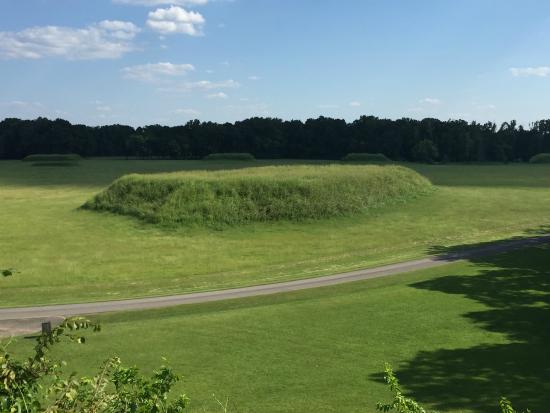
Moundville Archaeological Park really is aptly named. The site consists of 26 earthen mounds. It’s all that’s left of what is believed to have been a 300-acre center of regional politics for the Mississippian people around the years 1000 to 1450. Visitors can explore this fascinating archaeological site, now much smaller at only 185 acres, and see the mounds and an interesting museum housing the many artifacts that have been found here.
Mystery Hill
Salem, New Hampshire
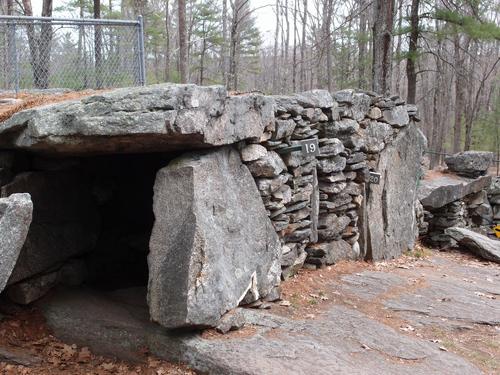
The archaeological site of Mystery Hill presents quite the challenge for archaeologists. Not only does the site present the typical questions (who built it and why?), it also is full of decoy “answers” left there by a 1930s landowner. He wanted the world to believe this unique rock formation was left over from an Irish monastic colony in the 7th century. In truth, Mystery Hill probably only dates back to the 1600s, though who constructed it and why remains an actual mystery. Often referred to as “America’s Stonehenge,” Mystery Hill is a large construction of stone structures and man-made caves.
Palenque
Palenque, Chiapas, Mexico
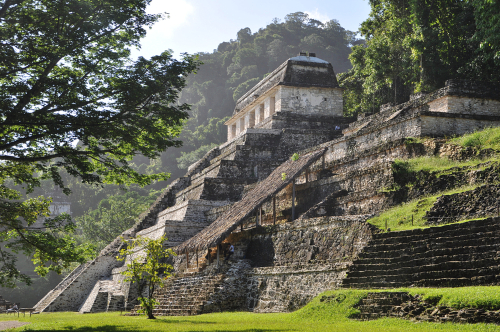
Located in the state of Chiapas, Palenque is a former Mayan city dating from 100 B.C. to about 800. Thanks to the many impressive temples still standing, this lush, jungly site is widely considered one of the best archeological sites in Mexico. There is a ton to see here, including a museum housing the slew of ancient artifacts dug up here over the years. As an added bonus, archaeological work is still being done right on site, and lucky guests can observe some excavation in action.
Pointe-a-Calliere
Old Montreal, Quebec, Canada
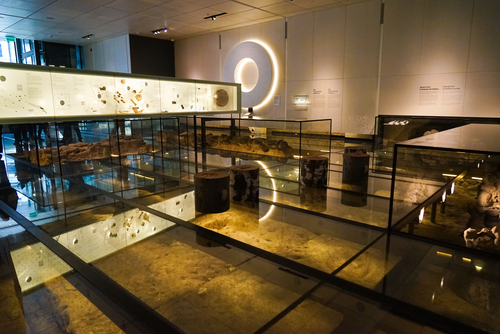
Located in the heart of Old Montreal, Pointe-a-Calliere is a well-laid out archaeological site that guides visitors through the development of the city now known as Montreal. It covers more than 1,000 years of human activity. Pointe-a-Calliere consists of displayed artifacts, lots of archaeological remains, and some reconstructed pathways and buildings that reveal what Montreal’s earliest urban landscape looked like.
Poverty Point State Historic Site
Epps, Louisiana
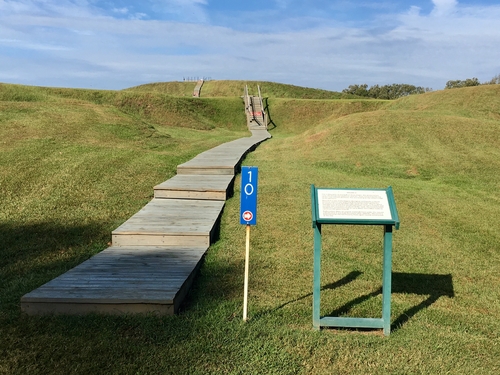
The Poverty Point State Historic Site is a fascinating archaeological spot about which very little is known. Archaeologists have concluded that the site was initially constructed by the Poverty Point Culture, a group of natives who lived in the areas now known as Alabama, Louisiana, and Mississippi. The site was probably constructed over the course of 600 years between 1650 B.C. to 700 B.C. Poverty Point today is approximately 900 acres of mounds and concentric circles. In and around them archaeologists have uncovered millions of artifacts. Though historians are working to figure out more about this site’s significance, it remains today a site of pure mystery and questions.
Roanoke Colony
Manteo, North Carolina
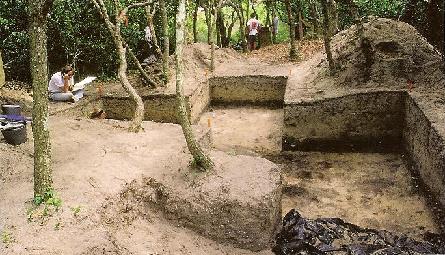
The archaeological site of Roanoke, known also as the “Lost Colony,” is one of the best known archaeological mysteries in the world. Meant to be the first permanent English settlement in the New World, Roanoke instead became the place where 116 men, women, and children disappeared without a trace in 1585. Roanoke and the surrounding archaeological sites are fascinating places to visit and learn about the various theories surrounding the colonists’ disappearance.
Serpent Mound
Peebles, Ohio
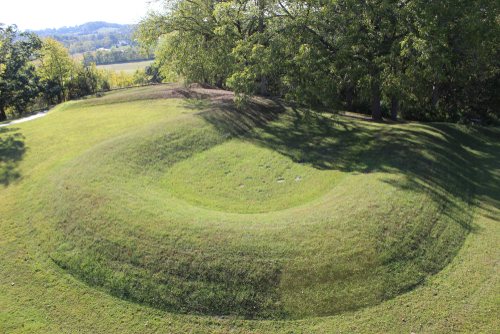
All archaeological sites start out as mysteries. But while most of the mysterious places on our list have — for the most part — been solved, Serpent Mound is one that still has archaeologists and historians scratching their heads. Located in modern-day Peebles, Ohio, Serpent Mound is exactly as it sounds: a mound shaped like a snake, complete with a large oval to form the head. Specifically, Serpent Mound remains the “largest surviving example of a prehistoric effigy mound in the world.” Stretching 1,348 feet and thought to have been constructed around 1070, the purpose of the mound hasn’t yet been proven. Historians also aren’t 100% sure about who might have constructed it, as this particular region was occupied for thousands of years by myriad prehistoric populations.
Teotihuacan
Teotihuacan, Mexico

Most people think of Chichen Itza when they think of Mexican archaeological sites, while places like Teotihuacan tend to get lost in the shuffle. This is absolutely shocking considering Teotihuacan was the largest urban center in all of North America between the years 200 B.C. and 650. It is said that in the year 500, Teotihuacan rivaled even the great empire of Rome in terms of wealth and power. Located 30 miles northeast of Mexico City, Teotihuacan is home to various archaeological sites that provide a glimpse into what life was like in this ancient powerhouse. Must-see sites include the Calzada de los Muertos (Avenue of the Dead), the Pyramid of the Moon, and the Pyramid of the Sun. The latter is the third largest pyramid in the world.
Tulum
Tulum, Quintana Roo, Mexico
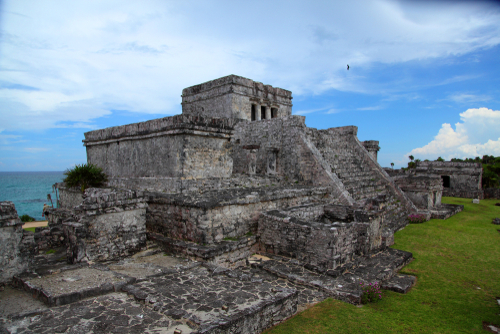
Located 80 miles south of Cancun, Tulum is best known as a luxurious getaway favored by the rich and famous. But first and foremost, Tulum is home to a fascinating archaeological site constructed by the Mayans between 1200 and 1450. The site of prehistoric Tulum is expansive, and archaeologists seem to believe that it was originally built as a fort to watch over the sea. Visitors to the site will see an impressive number of standing monuments, including the Temple of the Frescoes, the Temple of the Descending God, and El Castillo.
Uxmal Ruins
Yucatan, Mexico
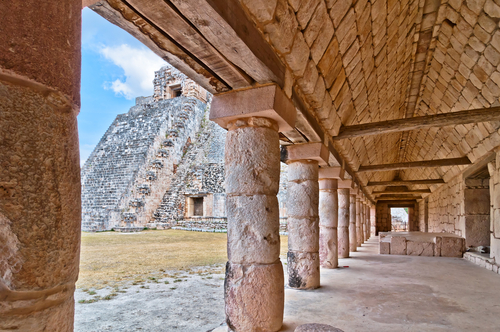
Like Chichen Itza, Palenque, and Calakmul, the ruins at Uxmal are considered one of the most significant Maya archaeological sites. Constructed atop a hill sometime during the 10th century, Uxmal (pronounced oosh-mahl) is a massive construction consisting of various temples and other structures in remarkably well-preserved condition. Especially impressive things to see include 120-foot high Magician’s Pyramid, the Nuns’ Quadrangle (actually used for soldiers), the 300-foot-long Governor’s Palace, and the nine-story Great Pyramid.
Wupatki
Wupatki National Monument, Flagstaff, Arizona
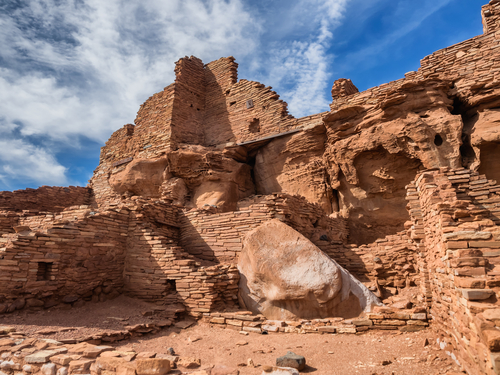
Located near the town of Flagstaff is Wupatki National Monument, one of the most fascinating archaeological sites in North America. The site gets its name from the ruined pueblo that is thought to have once contained upwards of 100 different rooms. Interestingly, the pueblo even contains a ball court. Three different cultures — the Sinagua, the Cohonina, and the Kayenta Anasazi — seem to be present within Wupatki, though archaeologists aren’t certain which one is responsible for building the Wupatki pueblo.
Yaxchilan
Chiapas, Mexico
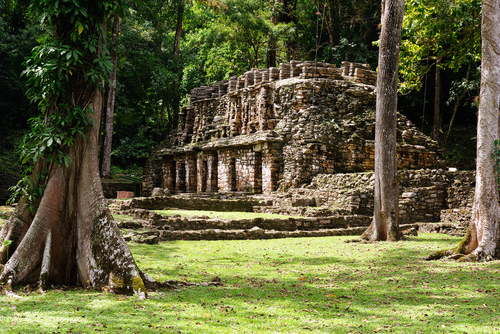
Located near the Rio Usumacinta, Yaxchilan is an impressive Maya city constructed around the year 750. Archaeologists have learned much about Yaxchilan and Maya culture by conducting extensive excavations here. Most notably, it’s been discovered that Yaxchilan was an important location for commerce due its spot along the river. Additionally, the site is famous for the many architectural features, such as ornamented facades and roof combs, that remain in excellent condition today.
By TVR Staff
September 2018

